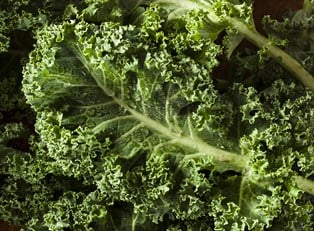Butterflies in your stomach, sweaty palms, increased heart rate, and loss of appetite. These are the most recognized symptoms of a common human condition most of us know all too well: falling in love. What causes these seemingly unnatural physical symptoms to suddenly overtake us? Surely another human being can’t have that kind of power over us, right? Like many other historically inexplicable phenomenons (Why is the sky blue? What makes the world go round? What is a rainbow?), love is easily explained by cold, hard science.
"It turns out that those “butterflies” in your stomach are really just the result of a spike in your stress hormones, such as adrenaline and cortisol."
Love typically goes through a predictable set of stages. Initially, we are just attracted to someone. Due to the hormones estrogen and testosterone, we experience the desire to form intimate and emotional bonds with someone based on simple attraction. However, this “simple” act sets off a rather complicated chain of events.
It turns out that those “butterflies” in your stomach are really just the result of a spike in your stress hormones, such as adrenaline and cortisol. Your body goes reacts in a similar way to the “fight or flight” response, which causes your blood to pump faster and be diverted away from vital organs like the stomach. The release of adrenaline can also cause sweatiness and dizziness.
Then, the neurotransmitters dopamine and serotonin come into play. Serotonin levels will drop to levels that are similar to people affected by obsessive compulsive disorders, which explains why we begin to “obsess” about our partners, unable to stop thinking about him or her.
"Sound familiar? That’s because a person in love frequently experiences the same symptoms as someone addicted to cocaine."
Dopamine is a key ingredient in any addiction, since it is primarily involved in the “reward center” of the brain. This means that positive interactions with the source of your attraction causes rushes of pleasure, increased energy, intense focus, and less need for basic functions like eating and sleeping.
Sound familiar? That’s because a person in love frequently experiences the same symptoms as someone addicted to cocaine. As it turns out, “your love is my drug” may be more accurate than we (or Ke$ha) ever realized.
After lust and attraction, the next step is attachment. Deep emotional connections begin to occur after the release of the chemicals vasopressin and oxytocin. Vasopressin is released after completion, and it stimulates feelings of devotion. Oxytocin is referred to as the “cuddle hormone.” It is released after intimate activity, as well as when mothers are nursing their young. This chemical is crucial for emotional bonding – both for romantic relationships as well as parent-child relationships. In a recent study conducted on rats and sheep, when oxytocin was taken out of the equation, it caused these animals to abandon their offspring.
So how do our bodies instinctively know to perform these processes on their own? When looked at from evolutionary perspective, love is necessary for the continuation of a species. Love is not exclusive to human beings. Other animals, like wolves, geese, and prairie voles experience the same release of chemicals that lead to long-term bonding, procreation, and therefore perpetuation of the circle of life.
"Like love, heartbreak is also due to a set of chemical processes, and it can cause real physical and emotional pain that sometimes leads to full-blown depression."
As with many drug addictions, falling in love can wear on your body over a long period of time. If you are constantly stuck on a never-ending roller coaster of emotions, then these chemicals stay unbalanced and never reach consistent levels. The effects of this might be to blame for the origin of the term “love-sick.” Like love, heartbreak is also due to a set of chemical processes, and it can cause real physical and emotional pain that sometimes leads to full-blown depression. So, now that you have all the facts, it’s up to you: is the "high" worth the possible "crash"?



